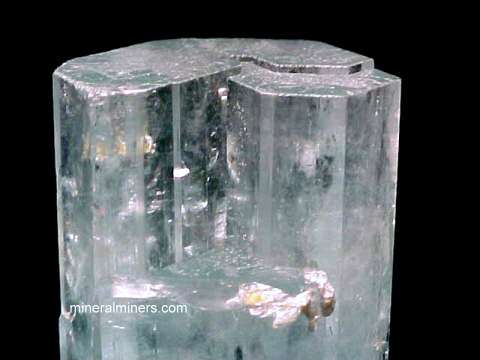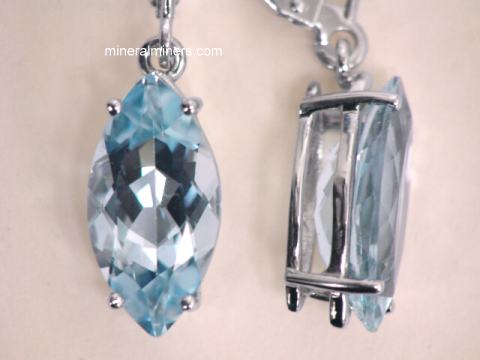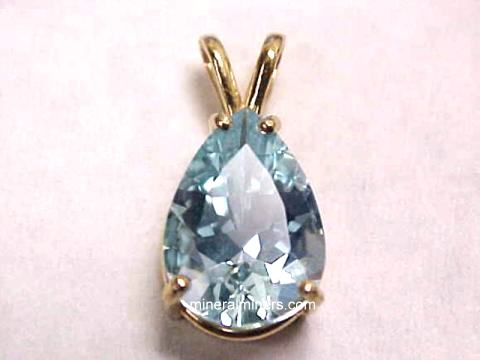



Links To Beryl Information Topics On This Page:
Beryl Varieties And Items in our VIRTUAL GALLERY
Beryl Physical Properties
Beryl Background Info
Beryl Occurance and Diagnostic Features
Beryl History and Uses
Beryl Metaphysical Properties
Beryl (Be3Al2(Si6O18) is a relatively common mineral although it does contain the rare element beryllium. It is most well known however for its gem varieties: the pale green to blue aquamarine, the intense green emerald, the pale yellow to yellowish-orange heliodor and the pale pink to salmon colored morganite. Beryl also occurs as a colorless beryl variety goshenite, and as the very rare red gem beryl variety bixbite.


Beryl (Be3Al2Si6O18) occurs most often in silica rich granites and granite pegmatites in association with quartz, feldspars and muscovite. In granitic pegmatites beryl can occur as the gem varieties aquamarine, heliodor and morganite, with pegmatite accessory minerals such as topaz, garnet, tourmaline, lepidolite, amblygonite, columbite-tantalite and spodumene. Non-gem beryl crystals of enormous proportions often occur in central pegmatite zones.
Beryl also occurs in mica schists of metamorphic-hydrothermal deposits wherein the schists and other associated host rocks form by chemical interaction between granitic rocks or pegmatites and enclosing basic (silica-deficient) rocks. The chemical ingredients necessary for the formation of the beryl frequently migrate from the granitic material into the adjoining basic rocks where the beryl crystallizes, changing the original basic rock composition through the process known as exometamorphism. If the basic rocks contain the element chromium, small amounts of the chromium may be incorporated into the beryl structure thereby giving the intense green color characteristic of the gem beryl variety emerald. Most emerald deposits are of this type with emerald occurring in a schist matrix, although some of the world's most famous emerald deposits are of hydrothermal origin where heated mineral bearing liquids or gases from deep igneous sources later cooled and crystallized along rock fractures.
Because of beryl's relatively high hardness and specific gravity, it is often found in eluvial and aluvial deposits.
The rare red beryl variety known as bixbite occurs within gas cavities in rhyolite.
Beryl is usually recognized by its hexagonal form and color, distinguished
from quartz by its higher specific gravity, and from apatite by its greater
hardness.
Return to the Index of Beryl Information Topics
The name beryl is of the Ancient Greek beryllos which was originally applied to all green gemstones, but later used only for beryl.
Beryl is used as a gemstone of various colors. Beryl is also the principle source of beryllium, which is used in the manufacture of light-weight metal alloys of high tensile strength and superior hardness and fatigue resistance.
Traditionally, beryl is believed to bring good luck and give eternal youthfullness. See the Mineral Information Pages for the the specific varieties of beryl for additional information.
Each variety of beryl has its own metaphysical characteristics and properties. For example, wearing aquamarine jewelry or holding aquamarine crystals is said to release anger and negativity replacing them with mental peace and clarity, providing emotional and mental balance. Please see our information pages for each beryl variety such as our aquamarine information page, our emerald information page, or our heliodor information page for their unique metaphysical properties.
For more in-depth metaphysical information, see our Metaphysical Books section.
This is the end of our Beryl Factsheet and Information page.
Enter our Virtual Gallery Pages for Aquamarine Mineral Specimens, Aquamarine Gems, and our Aquamarine Earrings